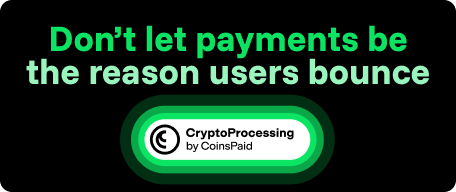Customer Education: Why Educational Content Matters

A simple truth of the competitive market states that if you don’t develop your audience, someone else will do it for you. Educational content that boosts your customers’ knowledge, helps them put the product into practice, and optimizes processes with your help is a must-have.
We spend every day floating through the waters of free content. The key here is not to swim away from the mainstream: choose trusted sources on the one hand, and provide objective and quality information on the other.
Let’s talk about what kind of educational content you should provide to your customers to maximize sales and engagement.
Why You Need It

Attending educational events or receiving helpful guides increases customer loyalty, helps bring them back for more purchases, and makes them choose your business when a competitor shows up on your doorstep. You don’t need to look far for examples. For instance, think of the way chain companies work, which integrate training mechanics, video lessons, and webinars into the daily practice of interaction with partners who promote direct sales of a particular product. Pay attention to the enterprise companies in your segment. They probably actively use educational content for clients, so they can find answers to their questions, sharpen their knowledge, and understand the benefits of applying certain solutions presented in the market. You might recall some previous cases, such as Binance Academy, crypto guides and video tutorials from Kraken, tutorials from HubSpot, or Microsoft Learn.
If a person completes your training course with new skills applicable to their career, brand loyalty will be maximized. They’ll be more willing to buy a new product from your company and convince colleagues to sign a new contract with a particular brand.
By the way, CoinsPaid Media offers this opportunity. It’s divided into several components. On the one hand, it’s a rubric on the website, where readers can find educational articles about the digital economy, blockchain, and related topics, and on the other hand, there are video courses about the crypto industry and cutting-edge technologies related to Web3.
Overall, the educational content:
- shows expertise;
- increases audience loyalty;
- raises brand awareness;
- shows the company’s value in customer care;
- starts the process of obtaining UGC content and brand sentiment, i.e., the qualitative reaction of users: resending, response, content completion, reaching the top positions on key requests;
- optimizes the process of an acquaintance of clients with the product.
Such content can be in any format: guides, articles, videos, posts on social media, mailing lists, and so on.
How to Create Educational Content

Creating your brand’s educational content step-by-step looks like this:
Step 1. Discuss and select an educational topic. Here your assistants are not only imagination and departments’ experience, but also Google Trends, customer feedback with the most frequently asked questions, and hot discussions in thematic subreddits and communities. My recommendation is also to feel free to poll your social media followers about their interests, look for connections to other areas, and see what your competitors do (and how they do it).
Step 2. Package the idea and finalize the formats. You have a list of ideas to put together and make a content builder. Something will be included in guides for the mailing list, something will become a mini-course for users, etc. After that, you’ll understand what channels are suitable for integrating various educational materials.
Note: The same idea can be packaged and presented in different ways. For example, you start with a series of posts about how to work effectively with your product, then you hold a Q&A webinar, and after that, you release a long read as a newsletter.
Step 3. Production and scheduling the publication.
This is the part where the idea takes tangible forms, texts are generated, videos are shot, and designs are prepared. In parallel, a plan is formed by which the materials are delivered to users. At the right time, in the right format, and with enviable regularity.
It’s perfect if the team has a separate department to handle these tasks. But if there isn’t one, you can turn to outsourcing specialists. In fact, CoinsPaid Media can help create useful content if you’re willing to establish quality engagement with your brand’s audience.
In the next column, I’ll talk more about the types of educational content you can start making with cool examples.
Stay tuned!










